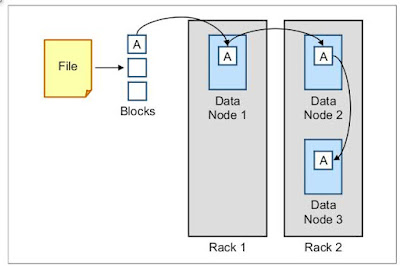Hadoop MapReduce: Powering Parallel Processing for Big Data Analytic
Introduction
In the era of big data, where datasets exceed the capacity of traditional systems, Hadoop MapReduce has become a foundational framework for processing massive volumes of data in a distributed, parallel manner. Apache Hadoop, an open-source ecosystem, enables scalable and fault-tolerant data processing across clusters of commodity hardware. Its MapReduce programming model simplifies the complexity of parallel computing, making it accessible for big data analytics tasks such as log analysis, data mining, and ETL (Extract, Transform, Load) operations. This chapter delves into the fundamentals of Hadoop MapReduce, its architecture, optimization techniques, real-world applications, challenges, and emerging trends, offering a comprehensive guide to leveraging its power for big data analytics as of 2025.
Fundamentals of Hadoop MapReduce
Hadoop MapReduce is a programming paradigm designed to process large datasets by dividing tasks into smaller, parallelized units across a distributed cluster. It operates within the Hadoop ecosystem, which includes:
Hadoop Distributed File System (HDFS): Stores data across nodes, ensuring high availability and fault tolerance.
MapReduce: Processes data through two phases—Map (data transformation) and Reduce (aggregation).
YARN (Yet Another Resource Negotiator): Manages cluster resources and schedules tasks.
Key concepts include:
Map Phase: Transforms input data into key-value pairs, processed in parallel across nodes.
Reduce Phase: Aggregates mapped outputs to produce final results.
Fault Tolerance: Automatically reassigns tasks if a node fails, leveraging HDFS replication.
Scalability: Handles petabytes of data by adding nodes to the cluster.
MapReduce excels in batch processing, contrasting with real-time frameworks like Apache Spark, and is ideal for tasks requiring massive data throughput.
Hadoop MapReduce Architecture
The architecture of Hadoop MapReduce is designed for distributed processing:
Client: Submits MapReduce jobs to the cluster.
JobTracker (pre-YARN) or ResourceManager (YARN): Coordinates job execution, assigning tasks to nodes.
TaskTracker (pre-YARN) or NodeManager (YARN): Executes tasks on individual nodes.
HDFS: Stores input, intermediate, and output data, with NameNode managing metadata and DataNodes storing actual data.
The workflow involves:
Input Splitting: Divides data into chunks processed by mappers.
Mapping: Applies user-defined functions to generate key-value pairs.
Shuffling and Sorting: Groups and sorts intermediate data for reducers.
Reducing: Aggregates data to produce final outputs.
Output Storage: Writes results to HDFS.
This pipeline ensures efficient parallel processing, with YARN optimizing resource allocation since its introduction in Hadoop 2.0.
Optimization Techniques
To maximize MapReduce performance, several optimization strategies are employed:
Data Locality: Process data on nodes where it resides to minimize network I/O.
Combiner Functions: Perform mini-reductions locally to reduce shuffle data volume.
Partitioning: Customize data distribution to balance reducer workloads.
Compression: Use codecs like Snappy or LZO to reduce I/O overhead.
Tuning Parameters: Adjust the number of mappers/reducers and memory allocation for efficiency.
Speculative Execution: Run duplicate tasks on slow nodes to mitigate stragglers.
Tools like Apache Hive and Pig simplify MapReduce programming by providing high-level abstractions, while frameworks like Apache Tez optimize DAG-based execution for complex jobs.
Applications in Industry
Hadoop MapReduce powers big data analytics across sectors:
E-commerce: Processes user logs for recommendation systems and customer segmentation.
Finance: Analyzes transaction data for fraud detection and risk modeling.
Telecommunications: Handles call detail records for network optimization.
Social Media: Mines user-generated content for trend analysis and ad targeting.
Government: Processes large-scale datasets for urban planning and public policy insights.
For instance, companies like eBay use MapReduce to analyze bidding patterns, processing terabytes of auction data daily to optimize pricing strategies.
Challenges and Solutions
MapReduce faces challenges in modern big data environments:
Latency: Batch processing is slower than real-time systems. Solution: Integrate with Spark or Flink for hybrid workflows.
Complexity: Writing MapReduce jobs requires expertise. Solution: Use Hive or Pig for simpler abstractions.
Resource Overhead: High disk I/O for intermediate data. Solution: Enable compression and combiners.
Scalability Limits: Struggles with iterative algorithms. Solution: Leverage Spark for in-memory processing.
Data Security: Sensitive data requires protection. Solution: Implement Kerberos authentication and encryption.
Compliance with regulations like GDPR in data handling is critical, addressed through secure HDFS configurations.
Case Studies
Yahoo: Pioneered MapReduce for indexing web content, processing petabytes to improve search relevance.
Walmart: Uses MapReduce to analyze supply chain data, optimizing inventory across thousands of stores.
NASA: Processes satellite imagery with MapReduce for climate modeling and anomaly detection.
These cases highlight MapReduce’s ability to tackle diverse, large-scale analytics tasks.
Future Trends
As of 2025, Hadoop MapReduce evolves within the big data ecosystem:
Hybrid Architectures: Integration with Spark and cloud platforms like AWS EMR for enhanced flexibility.
Cloud-Native Deployments: Growing adoption in managed services (e.g., Google Cloud Dataproc) for scalability.
AI Integration: Combining MapReduce with machine learning pipelines for predictive analytics.
Improved Abstractions: Tools like Hive on Tez reduce coding complexity.
Market Growth: The big data market, including Hadoop, is projected to exceed $300 billion, driven by enterprise demand.
Advancements in containerization (e.g., Kubernetes) and serverless computing will further streamline MapReduce deployments.
Conclusion
Hadoop MapReduce remains a cornerstone of big data analytics, offering robust parallel processing for large-scale datasets. Its fault-tolerant, scalable architecture empowers organizations to extract insights from diverse data sources. By optimizing performance and addressing challenges, MapReduce continues to support critical applications in 2025. As it integrates with modern frameworks and cloud ecosystems, Hadoop MapReduce will maintain its relevance, driving innovation in data-driven decision-making.




Comments
Post a Comment